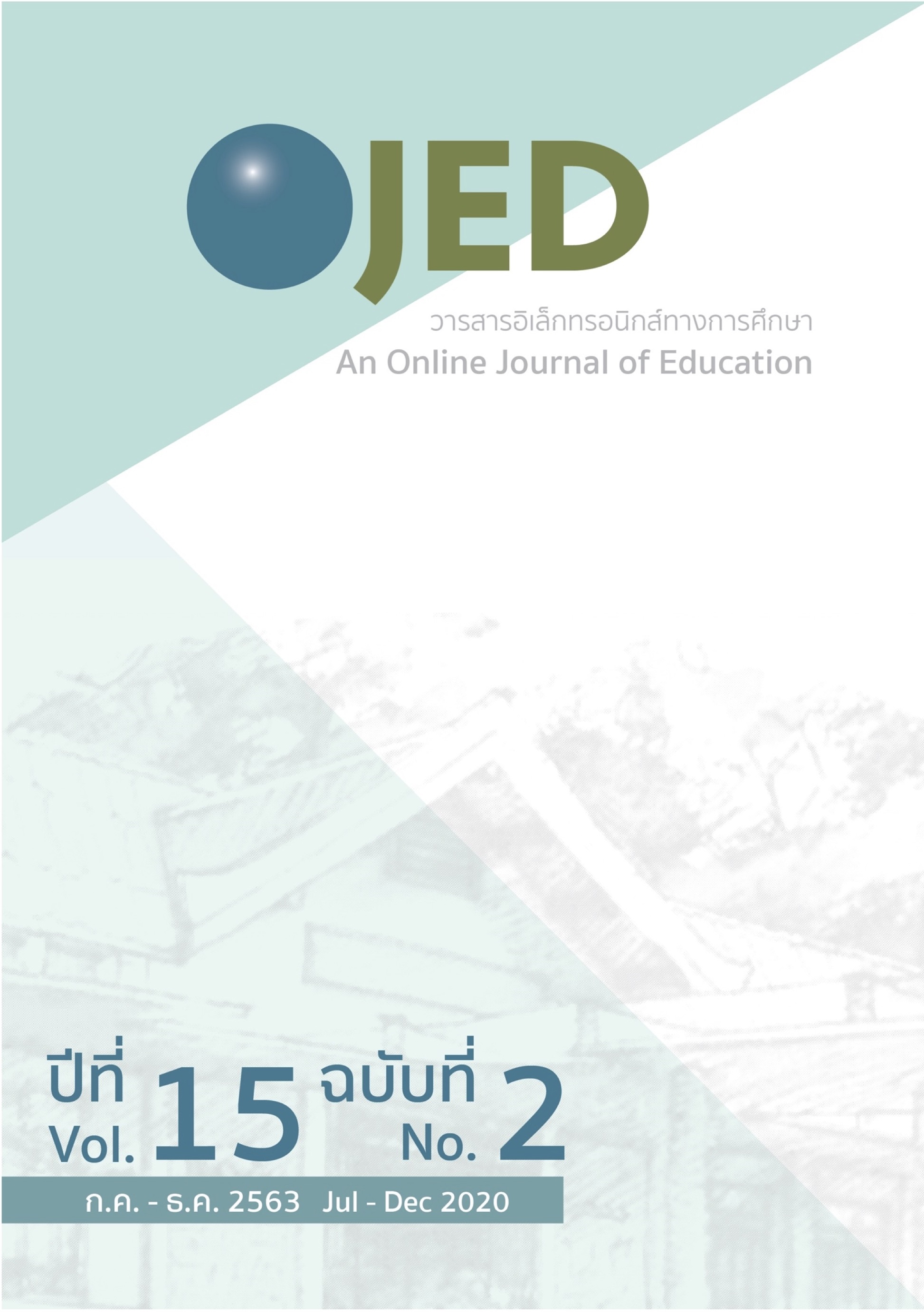Learning Design of Cloud Based Mobile Learning with 4Ex2 Model on Mathematical Problem Solving Ability
DOI:
https://doi.org/10.14456/ojed.2020.53Keywords:
cloud based mobile, 4Ex2 model, problem solving abilityAbstract
Nowadays, the learning process is emphasized on Constructivism theory. It could build students with deep knowledge in long term and systematic thinking process. Students with systematic thinking skills are likely to solve problems in their daily life effectively. Indeed, every learner needs Mathematical problem solving ability because Mathematics is the foundation subject that they are required to study in the basic education. If learners are well-equipped with mathematical problem solving ability, they would be able to apply this ability in any academic fields. An essential tool enhancing mathematical problem solving ability is mobile learning on cloud with 4Ex2. The study consists of 3 sections: (1) 4Ex2 instructional models, (2) mobile learning, and (3) cloud technology. The process is a combination of mobile learning and cloud technology. Consequently, the advantages of using mobile learning and cloud technology in learning are that learners can have self-studies outside classrooms. The integration of using 4Ex2 instructional model, an inquiry based system, with those technologies in classroom would help learners to be able to create their own knowledge better than being taught by traditional teaching. This is an extension of an educational technology field that encourages students to pay more interest in mathematics.
References
กชกร สายสุวรรณ. (2555). การพัฒนารูปแบบการจัดการเรียนรู้โดยบูรณาการโมบายเลิร์นนิงด้วยวิธีการแก้ปัญหาร่วมกันเพื่อส่งเสริมความใฝ่รู้สำหรับนักศึกษาปริญญาตรี [วิทยานิพนธ์ปริญญาดุษฎีบัณฑิต ไม่ได้ตีพิมพ์]. จุฬาลงกรณ์มหาวิทยาลัย.
กุลชัย กุลตวนิช. (2557). ระบบการเรียนบนห้องเรียนเสมือนแบบคลาวด์ตามแนวคิดการเรียนรู้คอนเน็คติวิสม์เพื่อส่งเสริมการรู้สารสนเทศและการรับรู้ความสามารถของตนเองด้านการรู้สารสนเทศสำหรับนิสิตนักศึกษาปริญญาตรี [วิทยานิพนธ์ปริญญาดุษฎีบัณฑิต ไม่ได้ตีพิมพ์]. จุฬาลงกรณ์มหาวิทยาลัย.
จิรากร สำเร็จ. (2551). ผลการจัดการเรียนรู้วิชาคณิตศาสตร์แบ่งกลุ่มผลสัมฤทธิ์โดยเน้นเทคนิค KWDL ที่มีต่อความสามารถในการสื่อสารทางคณิตศาสตร์ ของนักเรียนชั้นมัธยมศึกษาปีที่ 6 ที่มีระดับความสามารถทางการเรียนแตกต่างกัน [วิทยานิพนธ์ปริญญามหาบัณฑิต ไม่ได้ตีพิมพ์]. มหาลัยศรีนครินทรวิโรฒ.
อัมพร ม้าคนอง. (2557). คณิตศาสตร์สำหรับครูมัธยม. โรงพิมพ์แห่งจุฬาลงกรณ์มหาวิทยาลัย.
Aaron, L. S., & Roche, C. M. (2011). Teaching, learning, and collaborating in the cloud: Applications of cloud computing for educators in post-secondary institutions. Journal of Educational Technology Systems, 40(2), 95-111.
Hwang, G. J., & Chang, H. F. (2011). A formative assessment-based mobile learning approach to improving the learning attitudes and achievements of students. Computers & Education, 56(4), 1023-1031.
Marshall, J. C., Horton, C., & Smart, J. (2009). 4Ex2 Instructional model: Uniting three learning constructs to improve praxis in science and mathematics classrooms. Journal of Science Teacher Education, 20(6), 501-516.
Quinn, C. N. (2011). Designing mLearning. http://www.designingmlearning.com/index.html
TechThought. (2012). 12 principles of mobile learning. https://www.teachthought.com/learning/12-principles-of-mobile-learning/
Ullman, D., & Haggerty, B. (2010). Embracing the cloud: Six ways to look at the shift to cloud computing. EDUCAUSE REVIEW. https://er.educause.edu/articles/2010/6/embracing-the-cloud-six-ways-to-look-at-the-shift-to-cloud-computing
Downloads
Published
How to Cite
Issue
Section
License

This work is licensed under a Creative Commons Attribution-NonCommercial-NoDerivatives 4.0 International License.




